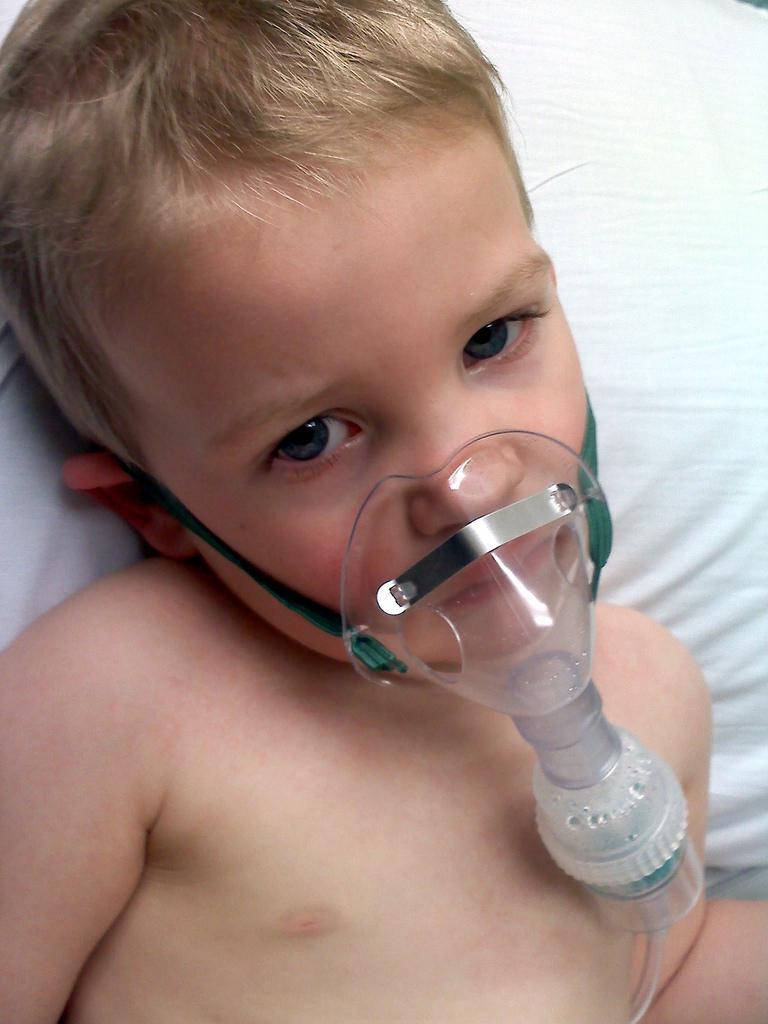Bronchiolitis
Published (updated: ).

Bronchiolitis is inflammation of the bronchioles usually caused by an acute viral illness. It is the most common lower respiratory tract infection in children younger than 2 years of age. Respiratory distress impedes appropriate oral intake resulting in frequent doctor visits and admissions to the hospital. It has become one of the most common reasons for hospitalization of children younger than 2 years of age during the winter months.
Etiology
The most common infectious agent causing acute bronchiolitis in children is the respiratory syncytial virus (RSV). If an adenovirus is identified, most clinicians use it to tailor investigations because the natural course of the infection often presents as a prolonged febrile illness.
Epidemiology
In northern countries, the outbreaks of bronchiolitis caused by RSV occur during winter and early spring, with a peak in January. Factors increasing the risk include preterm birth, chronic lung disease (CLD), complicated congenital heart disease (CHD), immunodeficiency, infants under 3 months of age, and the presence of other underlying chronic illnesses. There has also been an association between maternal smoke exposure and the severity of RSV bronchiolitis in infants. Some studies even suggest a link between smoke exposure and the increased risk of hospitalizations in children. The use of molecular tests has improved the ability to diagnose patients with viral bronchiolitis with the offending viral pathogen. In fact, respiratory syncitial virus (RSV) has been implicated in 80% of cases
Cockroaches, dust mites, and cat and dog dander are allergens found in homes that could also play a role in triggering the illness in infants. The Early Life (RBEL) prospective cohort study also found a correlation between wheezing secondary to respiratory syncytial virus (RSV) bronchiolitis and future development of early-onset asthma in children.
Pathophysiology
Bronchiolitis occurs as a result of the inflammation of the lining of the epithelial cells of the small airways in the lungs causing mucus production, inflammation and cellular necrosis of those cells. It is the inflammation of these cells that can obstruct the airway and ultimately result in wheezing.
History and Physical
The initial presentation includes a runny nose, nasal congestion, decreased appetite, and cough usually for approximately 3 days. As the disease progresses, tachypnea, the use of accessory respiratory muscles with intercostal and subcostal retractions, and wheezing can develop. Eventually grunting, nasal flaring, cyanosis, hypoxia, and respiratory failure can occur. Therefore, it is important to closely monitor children especially younger infants with this illness. Fever can sometimes be present. In such cases, urinalysis and/or urine culture can be considered to rule out a urinary tract infection (UTI), especially in uncircumcised males.
Treatment / Management
The management is supportive and should include hydration, suction of the upper airway and close monitoring for signs of respiratory failure and the need for intubation and mechanical ventilation. Hypertonic saline nebulizations have been helpful. Supplemental oxygen is not routinely used unless the oxygen saturations are consistently less than 90%. Continuous pulse oximetry is not recommended either since it might increase the length of stay. Antipyretics are indicated if fever develops. Bronchodilators do not shorten the days of symptoms, admission rates or length of stay. As a result, trials are no longer recommended. Systemic steroids and racemic epinephrine are also not recommended. Antibiotics should only be used if there is a superimposed infection present in addition to the bronchiolitis.
Differential Diagnosis
The differential diagnosis includes gastroesophageal reflux disease (GERD), congenital malformations, asthma, or the aspiration of a foreign body.
Prognosis
Although some studies show evidence of an increased risk of asthma following an episode of bronchiolitis, only a small percentage of children with bronchiolitis develop asthma. A history of recurrent wheezing, and a positive family history of asthma, allergies and/or atopic dermatitis is believed to increase the risk of developing asthma in affected patients in the future.
